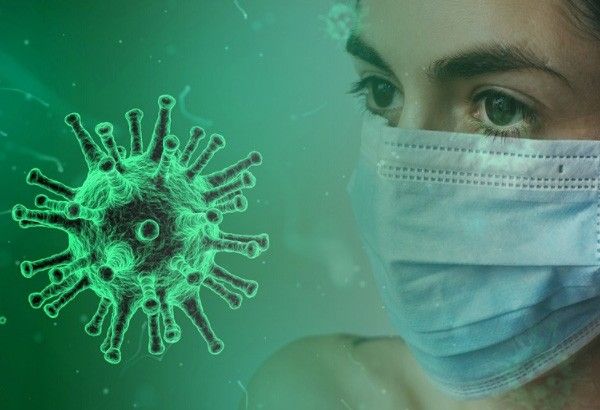LIST: COVID-19 comorbidities, risk factors, treatment

MANILA, Philippines — With vaccinations underway, most people are still waiting for their turn to have their jabs. Among the concerns related to vaccination and COVID-19 are comorbidities.
The term "comorbidities" was coined by American epidemiologist A.R. Feinstein in the 1970s. Dr. Feinstein came up with the word when he was studying patients with rheumatic fever who also suffered from multiple diseases.
Comorbidity is generally described as the presence of one or more conditions concurrent with a primary condition.
Last March, the Department of Health released a list of comorbidities that would qualify people diagnosed with it to get their priority vaccine slots.
These are those with chronic respiratory disease, hypertension, cardiovascular disease, malignancy, diabetes mellitus, obesity and chronic kidney disease.
Diabetes (38%), chronic obstructive pulmonary disease (9%) and hypertension (8%) were the conditions most impacted by the reduction in healthcare access and resources because of COVID-19. These data was from the study titled "Impact of COVID-19 on routine care for chronic diseases: A global survey of views from healthcare professionals," by Yogini V. Chudasama et al.
The Philippine Statistics Authority (PSA) also released a report stating that the leading causes of death among Filipinos in 2020 were heart diseases, cancer and cerebrovascular disease. There were 99,680 deaths from heart diseases in 2020. It was a 2.3% increase from the 2019 heart disease-related deaths. Cancer-related deaths for 2020 were 62,289 while cerebrovascular disease-related deaths were 59,736.7.
Doctors at the recent "Talk with Doc" roundtable discussion with Dr. Helen Ong-Garcia of St. Luke’s Medical Center Global City; Dr. Patrick Gerard Moral of University of Santo Tomas Faculty of Medicine & Surgery, and Einstein Rojas of Philippine Alliance of Patient Organizations gave insights about some of these diseases. These include risk factors and signs of the disease.
Hypertension
Commonly known as high blood pressure, Hypertension is described by the Mayo Clinic as a common condition wherein the force of blood against the artery walls is consistently high. When left untreated or uncontrolled, hypertension may eventually cause heart problems such as heart disease.
There are two main types of high blood pressure.
Primary is a type of hypertension which develops gradually through the years. Most patients with primary hypertension have no identifiable cause for such. Secondary, meanwhile, occurs when patients with underlying condition/s may have secondary hypertension. It also appears suddenly and causes the patient to have higher blood pressure than that of a primary hypertension.
Risk factors:
• Lifestyle: Being overweight, not physically active, cigarette smoking, heavy drinking, unhealthy diet (too much salt, too little potassium in food intake)
• Medical: Kidney disease, diabetes and sleep apnea
• Others: people aged 64 or older, family history
Signs:
It is important to note that most people with hypertension do not have signs or symptoms, even if blood pressure reading reaches dangerously high levels. Some of those who exhibit the signs experience headaches, shortness of breath or nosebleeds. It is stressed that these symptoms are not specific and usually occur when the patient’s blood pressure has reached a severe or life-threatening stage.
Type 2 Diabetes
The Mayo Clinic describes Type 2 diabetes as a chronic condition that causes abnormally high blood sugar levels. It develops when the body either does not produce enough insulin or does not use it properly.
Risk factors:
• Lifestyle: being overweight or obese, being inactive
• Medical: prediabetes (sugar level is higher than normal), polycystic ovary syndrome, pregnancy-related risks, blood lipid levels
• Others: people aged 45 or older, family history
Signs:
It is like a sleeper disease. A patient may have type 2 diabetes for years without even knowing it as symptoms often develop slowly.
When signs and symptoms are present, the patient may feel any of the following: Increased thirst, frequent urination, increased hunger, unintended weight loss, fatigue, blurred vision, slow-healing sores, frequent infections, numbness or tingling in the hands or feet, and darkened skin that usually occur in the armpits and neck.
Chronic Obstructive Pulmonary Disease (COPD)
The Mayo Clinic refers to COPD as a progressive lung disease which causes blocked airflow from the lungs. Emphysema and chronic bronchitis are the most common conditions that contribute to COPD.
Emphysema is a lung condition that causes shortness of breath while chronic bronchitis is the long-term inflammationof the bronchi. Bronchi are the main passageway into the lungs.
While COPD is a progressive disease, it is treatable.
Risk factors:
• Exposure to chemicals and fumes
• Long-term exposure to air pollution and inhaling dust
• Cigarette and cigar smoke, pipe smoke, secondhand smoke
• People at least 40 years old with history of smoking
Symptoms:
Patients with the risk factors should take note of this disease because its early symptoms are mild. They might mistake it for an ordinary cold. Health experts also noted that occasional shortness of breath, especially after exercise, could be another symptom. A mild but recurrent cough should be observed. Those who need to clear their throat often, especially first thing in the morning, should also be alerted.
Experts warned that when these early symptoms are ignored and a patient delays seeing a doctor, these can get progressively worse and harder to ignore.
Progressive symptoms include shortness of breath after physical activity that are very mild, wheezing, chronic cough with or without mucus, need to clear mucus from a patient's lungs every day, lack of energy, and frequent colds, flu, or other respiratory infections.
RELATED: 'Talk to Doc': Doctors share tips how to get safe check-ups during pandemic



















